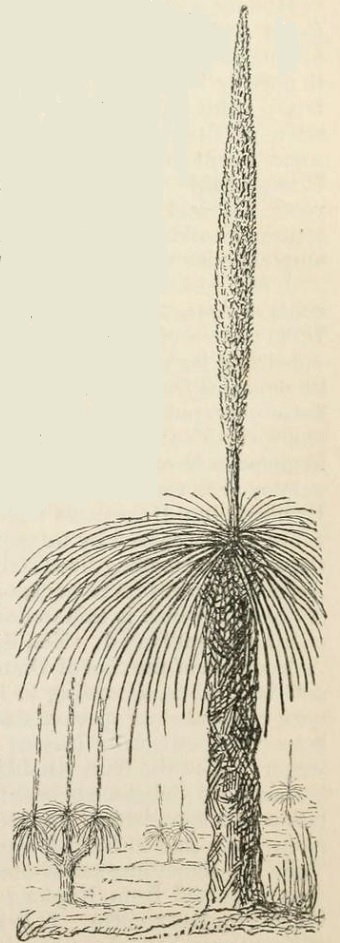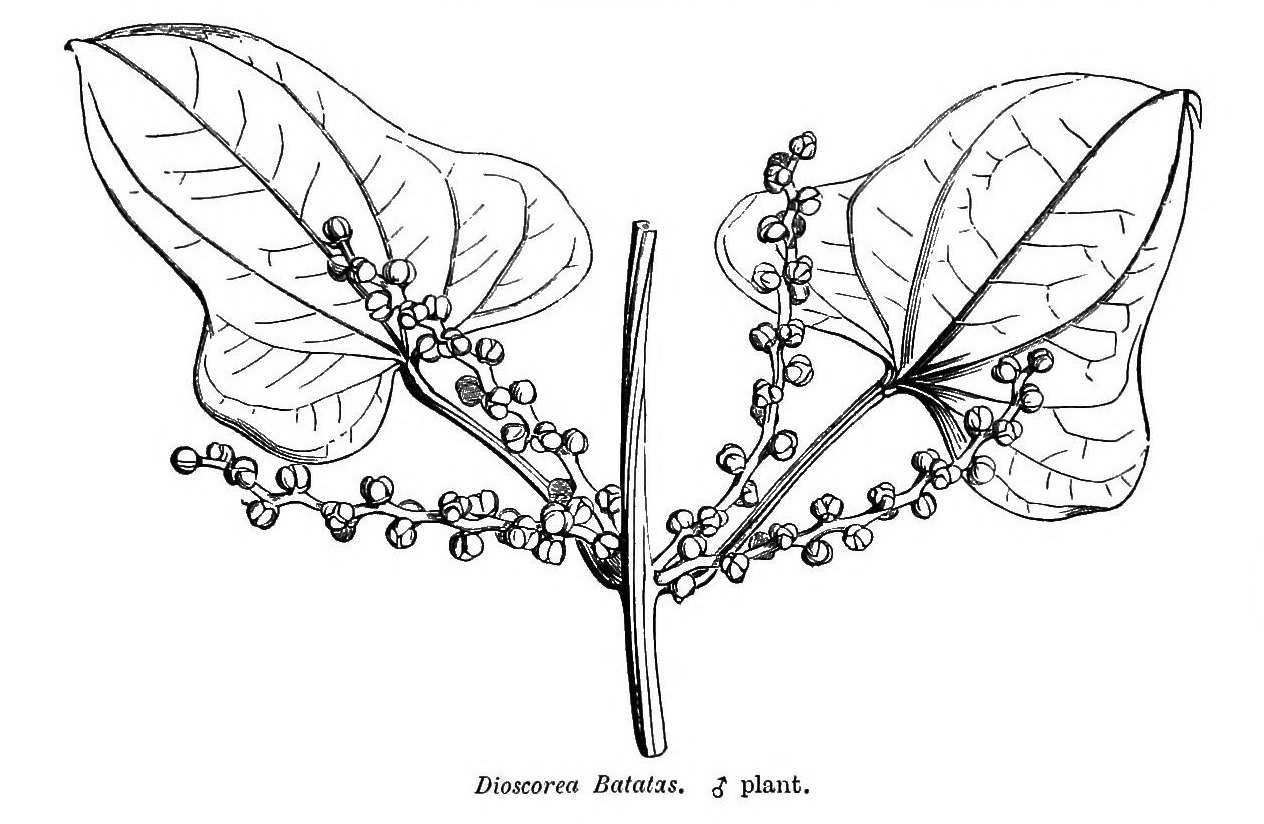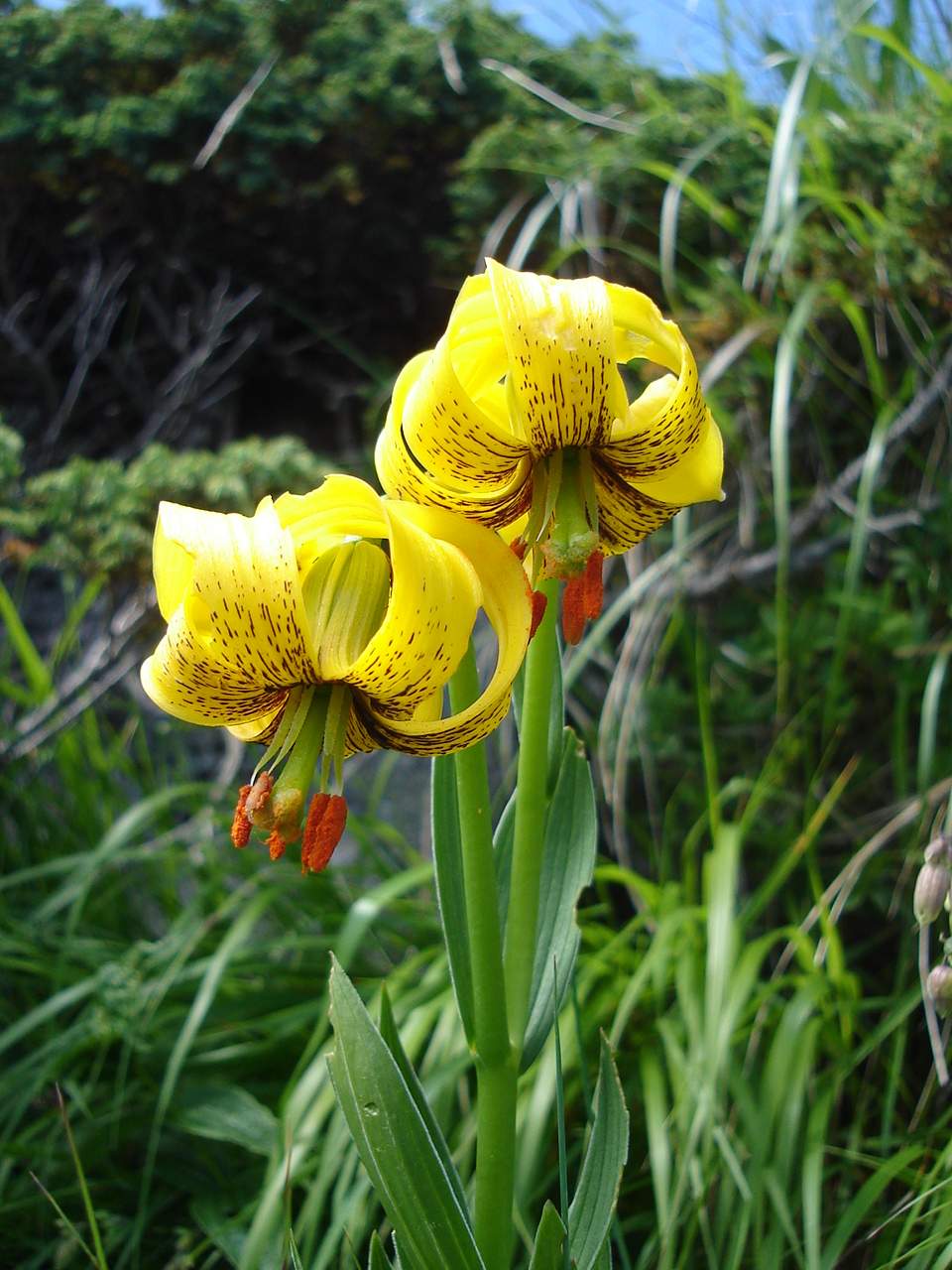|
Monocotyledonous
Monocotyledons (), commonly referred to as monocots, (Lilianae ''sensu'' Chase & Reveal) are grass and grass-like flowering plants (angiosperms), the seeds of which typically contain only one embryonic leaf, or cotyledon. They constitute one of the major groups into which the flowering plants have traditionally been divided; the rest of the flowering plants have two cotyledons and are classified as dicotyledons, or dicots. Monocotyledons have almost always been recognized as a group, but with various taxonomic ranks and under several different names. The APG III system of 2009 recognises a clade called "monocots" but does not assign it to a taxonomic rank. The monocotyledons include about 60,000 species, about a quarter of all angiosperms. The largest family in this group (and in the flowering plants as a whole) by number of species are the orchids (family Orchidaceae), with more than 20,000 species. About half as many species belong to the true grasses (Poaceae), which are econ ... [...More Info...] [...Related Items...] OR: [Wikipedia] [Google] [Baidu] |
Asparagales
Asparagales (asparagoid lilies) is an order (biology), order of plants in modern classification systems such as the Angiosperm Phylogeny Group (APG) and the Angiosperm Phylogeny Web. The order takes its name from the type (biology), type family (biology), family Asparagaceae and is placed in the monocots amongst the lilioid monocots. The order has only recently been recognized in classification systems. It was first put forward by herbert Huber (botanist), Huber in 1977 and later taken up in the Dahlgren system of 1985 and then the APG in 1998, 2003 and 2009. Before this, many of its families were assigned to the old order Liliales, a very large order containing almost all monocots with colorful tepals and lacking starch in their endosperm. DNA sequencing, DNA sequence analysis indicated that many of the taxa previously included in Liliales should actually be redistributed over three orders, Liliales, Asparagales, and Dioscoreales. The boundaries of the Asparagales and of its fam ... [...More Info...] [...Related Items...] OR: [Wikipedia] [Google] [Baidu] |
Petrosaviales
Petrosaviaceae is a family of flowering plants belonging to a monotypic order, Petrosaviales. Petrosaviales are monocots, and are grouped within the lilioid monocots. Petrosaviales are a very small order (one family, two genera and four species were accepted in 2016) of photosynthetic ('' Japonolirion'') and rare leafless achlorophyllous, mycoheterotrophic plants ('' Petrosavia'') found in dark montane rainforests in Japan, China, Southeast Asia and Borneo. They are characterised by having bracteate racemes, pedicellate flowers, six persistent tepals, septal nectaries, three almost distinct carpels, simultaneous microsporogenesis, monosulcate pollen, and follicular fruit. Taxonomy The family has only been recognized in modern classifications, previously the plants involved were usually treated as belonging to the family Liliaceae. The APG II system recognized the family and assigned it to the clade monocots, unplaced as to order. The APG III system of 2009 and the APG IV syste ... [...More Info...] [...Related Items...] OR: [Wikipedia] [Google] [Baidu] |
Poales
The Poales are a large order of flowering plants in the monocotyledons, and includes families of plants such as the grasses, bromeliads, and sedges. Sixteen plant families are currently recognized by botanists to be part of Poales. Description The flowers are typically small, enclosed by bracts, and arranged in inflorescences (except in three species of the genus ''Mayaca'', which possess very reduced, one-flowered inflorescences). The flowers of many species are wind pollinated; the seeds usually contain starch. Taxonomy The APG III system (2009) accepts the order within a monocot clade called commelinids, and accepts the following 16 families: The earlier APG system (1998) adopted the same placement of the order, although it used the spelling "commelinoids". It did not include the Bromeliaceae and Mayaceae, but had the additional families Prioniaceae (now included in Thurniaceae), Sparganiaceae (now in Typhaceae), and Hydatellaceae (now transferred out of the monocots; ... [...More Info...] [...Related Items...] OR: [Wikipedia] [Google] [Baidu] |
Lilioid Monocots
Lilioid monocots (lilioids, liliid monocots, petaloid monocots, petaloid lilioid monocots) is an informal name used for a grade (grouping of taxa with common characteristics) of five monocot orders (Petrosaviales, Dioscoreales, Pandanales, Liliales and Asparagales) in which the majority of species have flowers with relatively large, coloured tepals. This characteristic is similar to that found in lilies ("lily-like"). Petaloid monocots refers to the flowers having tepals which all resemble petals (petaloid). The taxonomic terms Lilianae or Liliiflorae have also been applied to this assemblage at various times. From the early nineteenth century many of the species in this group of plants were put into a very broadly defined family, Liliaceae ''sensu lato'' or ''s.l.'' (lily family). These classification systems are still found in many books and other sources. Within the monocots the Liliaceae ''s.l.'' were distinguished from the Glumaceae. The development of molecular phyloge ... [...More Info...] [...Related Items...] OR: [Wikipedia] [Google] [Baidu] |
Dioscoreales
The Dioscoreales are an order of monocotyledonous flowering plants in modern classification systems, such as the Angiosperm Phylogeny Group and the Angiosperm Phylogeny Web. Within the monocots Dioscoreales are grouped in the lilioid monocots where they are in a sister group relationship with the Pandanales. The Dioscoreales must contain the family Dioscoreaceae which includes the yam ('' Dioscorea'') which is an important food source in many regions. Older systems tended to place all lilioid monocots with reticulate veined leaves (such as Smilacaceae and Stemonaceae together with Dioscoraceae) in Dioscoreales. As currently circumscribed by phylogenetic analysis using combined morphology and molecular methods, Dioscreales contains many reticulate veined vines in Dioscoraceae, it also includes the myco-heterotrophic Burmanniaceae and the autotrophic Nartheciaceae. The order consists of three families, 22 genera and about 850 species. Description Dioscoreales are vines or her ... [...More Info...] [...Related Items...] OR: [Wikipedia] [Google] [Baidu] |
Early Cretaceous
The Early Cretaceous ( geochronological name) or the Lower Cretaceous (chronostratigraphic name), is the earlier or lower of the two major divisions of the Cretaceous. It is usually considered to stretch from 145 Ma to 100.5 Ma. Geology Proposals for the exact age of the Barremian-Aptian boundary ranged from 126 to 117 Ma until recently (as of 2019), but based on drillholes in Svalbard the defining early Aptian Oceanic Anoxic Event 1a (OAE1a) was carbon isotope dated to 123.1±0.3 Ma, limiting the possible range for the boundary to c. 122–121 Ma. There is a possible link between this anoxic event and a series of Early Cretaceous large igneous provinces (LIP). The Ontong Java-Manihiki-Hikurangi large igneous province, emplaced in the South Pacific at c. 120 Ma, is by far the largest LIP in Earth's history. The Ontong Java Plateau today covers an area of 1,860,000 km2. In the Indian Ocean another LIP began to form at c. 120 Ma, the Kerguelen P ... [...More Info...] [...Related Items...] OR: [Wikipedia] [Google] [Baidu] |
Liliidae
Liliidae is a botanical name at the rank of subclass. Circumscription of the subclass will vary with the taxonomic system being used (there are many such systems); the only requirement being that it includes the family Liliaceae. Liliidae in Takhtajan system The Takhtajan system treats this as one of six subclasses within class Liliopsida (= monocotyledons). This subclass consists of: * subclass Liliidae *: superorder Lilianae *:: order Melanthiales *:: order Colchicales *:: order Trilliales *:: order Liliales *:: order Alstroemeriales *:: order Iridales *:: order Tecophilaeales *:: order Burmanniales *:: order Hypoxidales *:: order Orchidales *:: order Amaryllidales *:: order Asparagales *:: order Xanthorrhoeales *:: order Hanguanales *: superorder Dioscoreanae *:: order Stemonales *:: order Smilacales *:: order Dioscoreales *:: order Taccales Liliidae in Cronquist system The Cronquist system treats this as one of five subclasses within class Liliopsida (= monocotyl ... [...More Info...] [...Related Items...] OR: [Wikipedia] [Google] [Baidu] |
Tropicos
Tropicos is an online botanical database containing taxonomic information on plants, mainly from the Neotropical realm (Central, and South America). It is maintained by the Missouri Botanical Garden and was established over 25 years ago. The database contains images and taxonomical and bibliographical data on more than 4.2 million herbarium A herbarium (plural: herbaria) is a collection of preserved plant specimens and associated data used for scientific study. The specimens may be whole plants or plant parts; these will usually be in dried form mounted on a sheet of paper (called ... specimens. In addition, it contains data on over 49,000 scientific publications. The database can be queried in English, French, and Spanish. The oldest records in the database go back to 1703. References External links * Online botany databases Online taxonomy databases Missouri Botanical Garden {{database-stub ... [...More Info...] [...Related Items...] OR: [Wikipedia] [Google] [Baidu] |
Botanical Authority
In botanical nomenclature, author citation is the way of citing the person or group of people who validly published a botanical name, i.e. who first published the name while fulfilling the formal requirements as specified by the '' International Code of Nomenclature for algae, fungi, and plants'' (''ICN''). In cases where a species is no longer in its original generic placement (i.e. a new combination of genus and specific epithet), both the authority for the original genus placement and that for the new combination are given (the former in parentheses). In botany, it is customary (though not obligatory) to abbreviate author names according to a recognised list of standard abbreviations. There are differences between the botanical code and the normal practice in zoology. In zoology, the publication year is given following the author names and the authorship of a new combination is normally omitted. A small number of more specialized practices also vary between the recommendations ... [...More Info...] [...Related Items...] OR: [Wikipedia] [Google] [Baidu] |
Liliopsida
Liliopsida Batsch (synonym: Liliatae) is a botanical name for the class containing the family Liliaceae (or Lily Family). It is considered synonymous (or nearly synonymous) with the name monocotyledon. Publication of the name is credited to Scopoli (in 1760): see author citation (botany). This name is formed by replacing the termination ''-aceae'' in the name Liliaceae by the termination ''-opsida'' (Art 16 of the ICBN). Although in principle it is true that circumscription of this class will vary with the taxonomic system being used, in practice this name is very strongly linked to the Cronquist system, and the allied Takhtajan system. These two are the only major systems to use the name, and in both these systems it refers to the group more widely known as the monocotyledons. Earlier systems referred to this group by the name Monocotyledones, with Monocotyledoneae an earlier spelling (these names may be used in any rank). Systems such as the Dahlgren and Thorne systems (more ... [...More Info...] [...Related Items...] OR: [Wikipedia] [Google] [Baidu] |
August Eichler
August Wilhelm Eichler, also known under his Latinized name, Augustus Guilielmus Eichler (22 April 1839 – 2 March 1887), was a German botanist who developed a new system of classification of plants to reflect the concept of evolution. His author abbreviation in botany is ''Eichler''. Biography Born in Neukirchen, Hesse, Eichler studied at the University of Marburg, Germany, and in 1871 became Professor of Botany at ''Technische Hochschule'' (Technical University) of Graz and director of the botanical garden in that city. In 1872 he received an appointment at the University of Kiel, where he remained until 1878 when he became director of the herbarium at the University of Berlin. He died in Berlin on March 2, 1887, of leukaemia. Eichler made important contributions to the study of the comparative structure of flowers (mainly on floral symmetry in his work ''Blütendiagramme''). He wrote extensively on the Coniferae, Cycadaceae and other plant groups of Brazil. Eichler Sys ... [...More Info...] [...Related Items...] OR: [Wikipedia] [Google] [Baidu] |
Batsch
August Johann Georg Karl Batsch (28 October 1761 – 29 September 1802) was a German naturalist. He was a recognised authority on mushrooms, and also described new species of ferns, bryophytes, and seed plants. Life and career Batsch was born in Jena, Saxe-Weimar to George Lorenz Bratsch and Ernestine (''nee'' Franke) Bratsch. He studied at the Jena City School, and then had private tuition. He showed an aptitude for natural sciences and drawing, and so subsequently studied medicine and philosophy at the University of Jena (now known as the Friedrich Schiller University of Jena), entering in 1772 and obtaining his doctorate in philosophy in 1781 and in medicine in 1786, his supervisor being Justus Christian Loder. Batsch was married in 1787 to Amalie Pfaundel. They had three children, Friedrich (born 1789), George Friedrich Karl (1792), and Karoline (1795). He died in 1802 after a short illness. In 1786 Batsch began to teach natural history at the University of Jena and in 17 ... [...More Info...] [...Related Items...] OR: [Wikipedia] [Google] [Baidu] |





